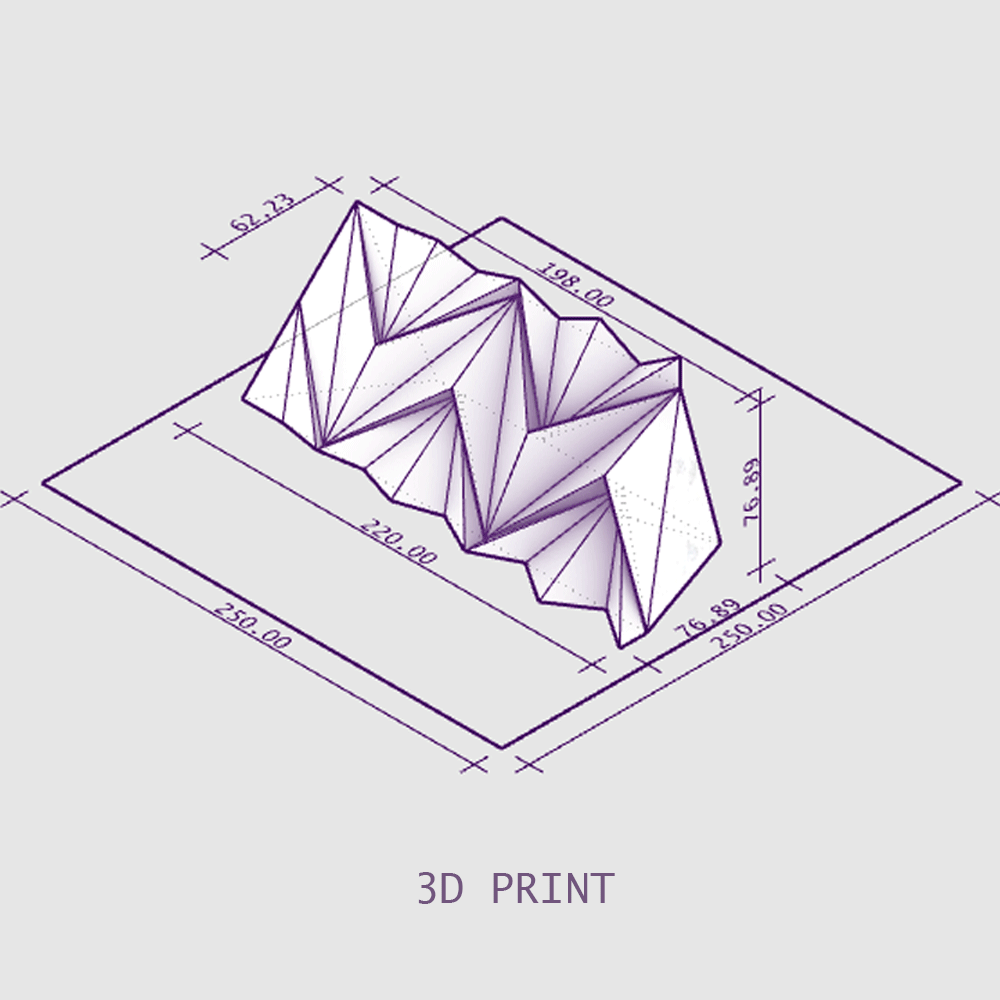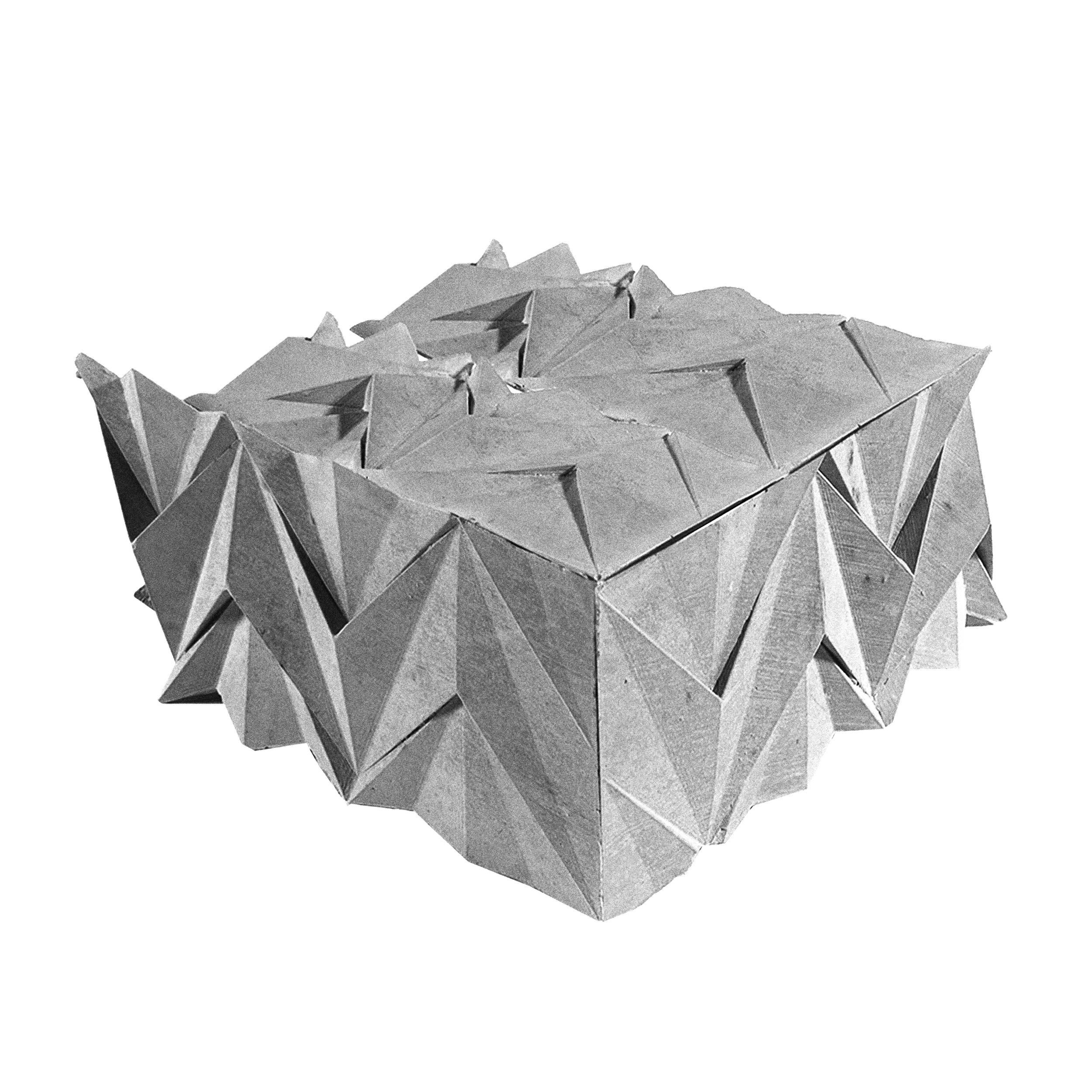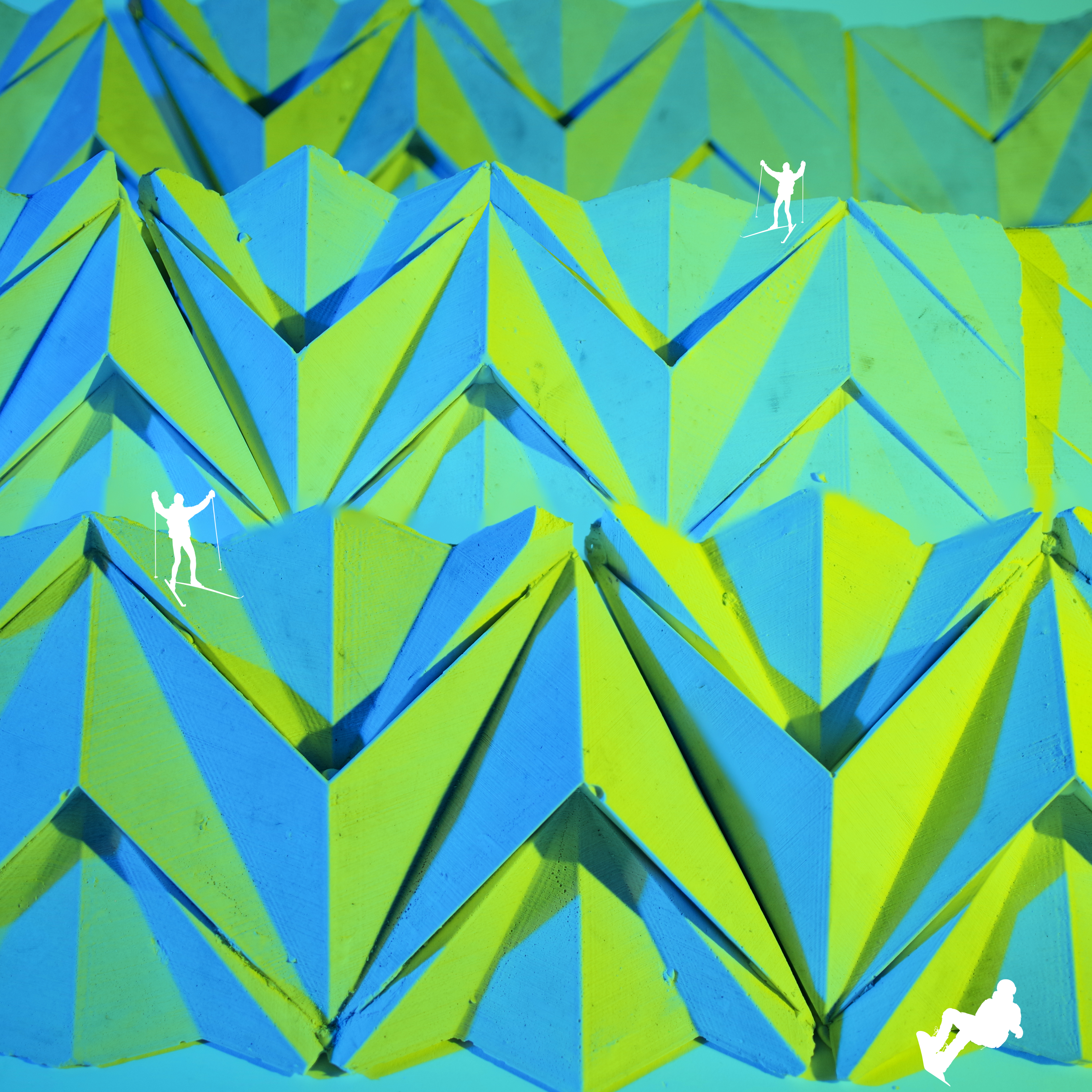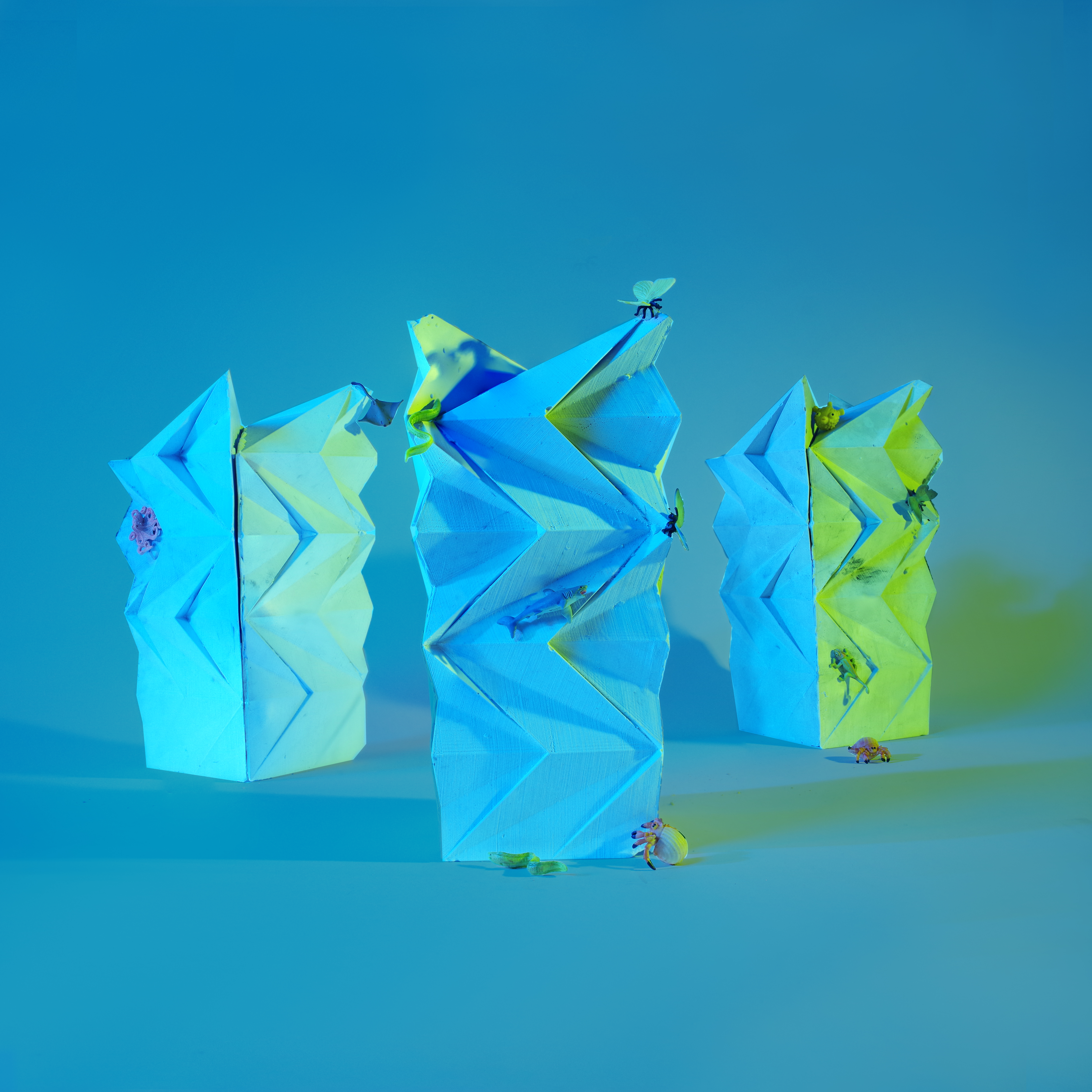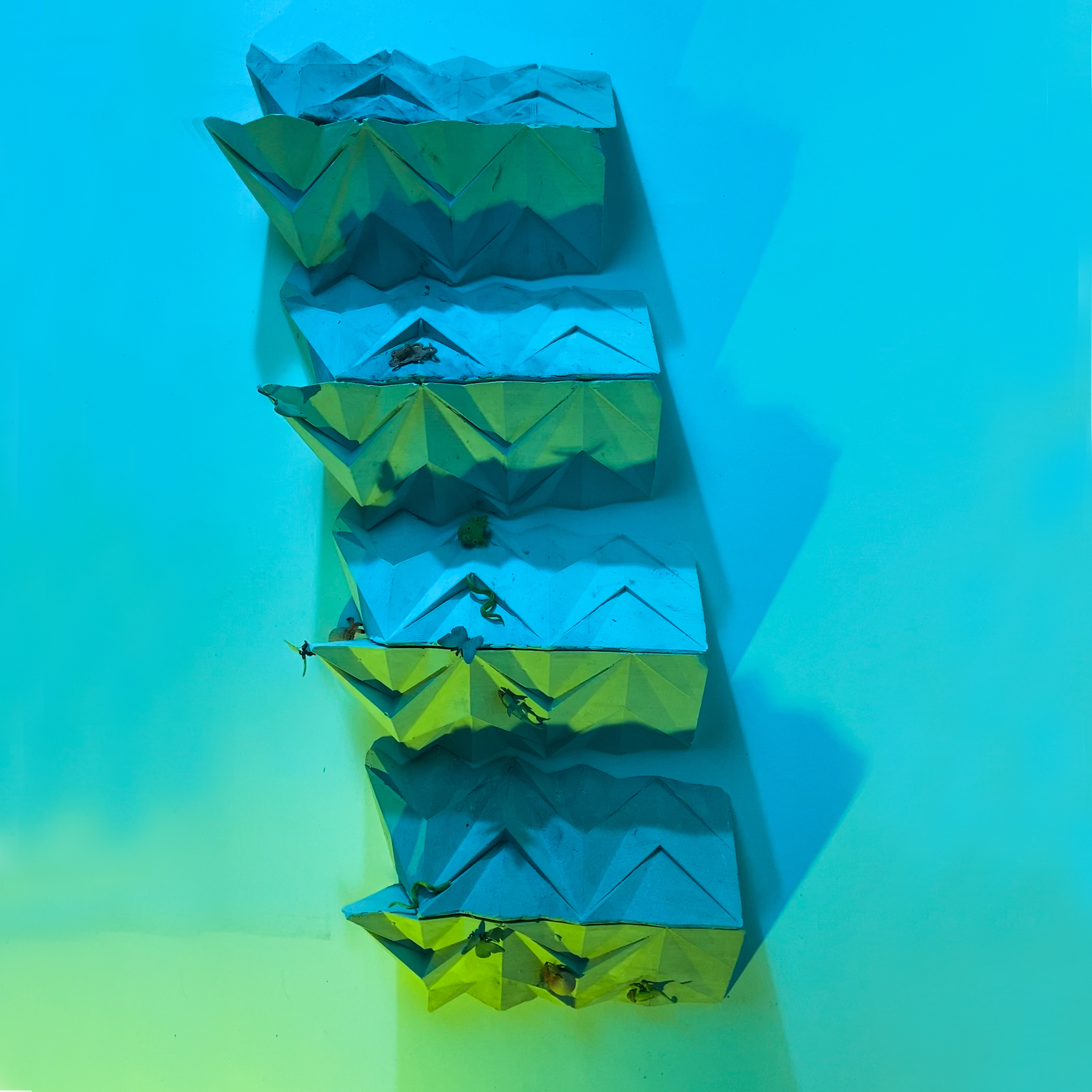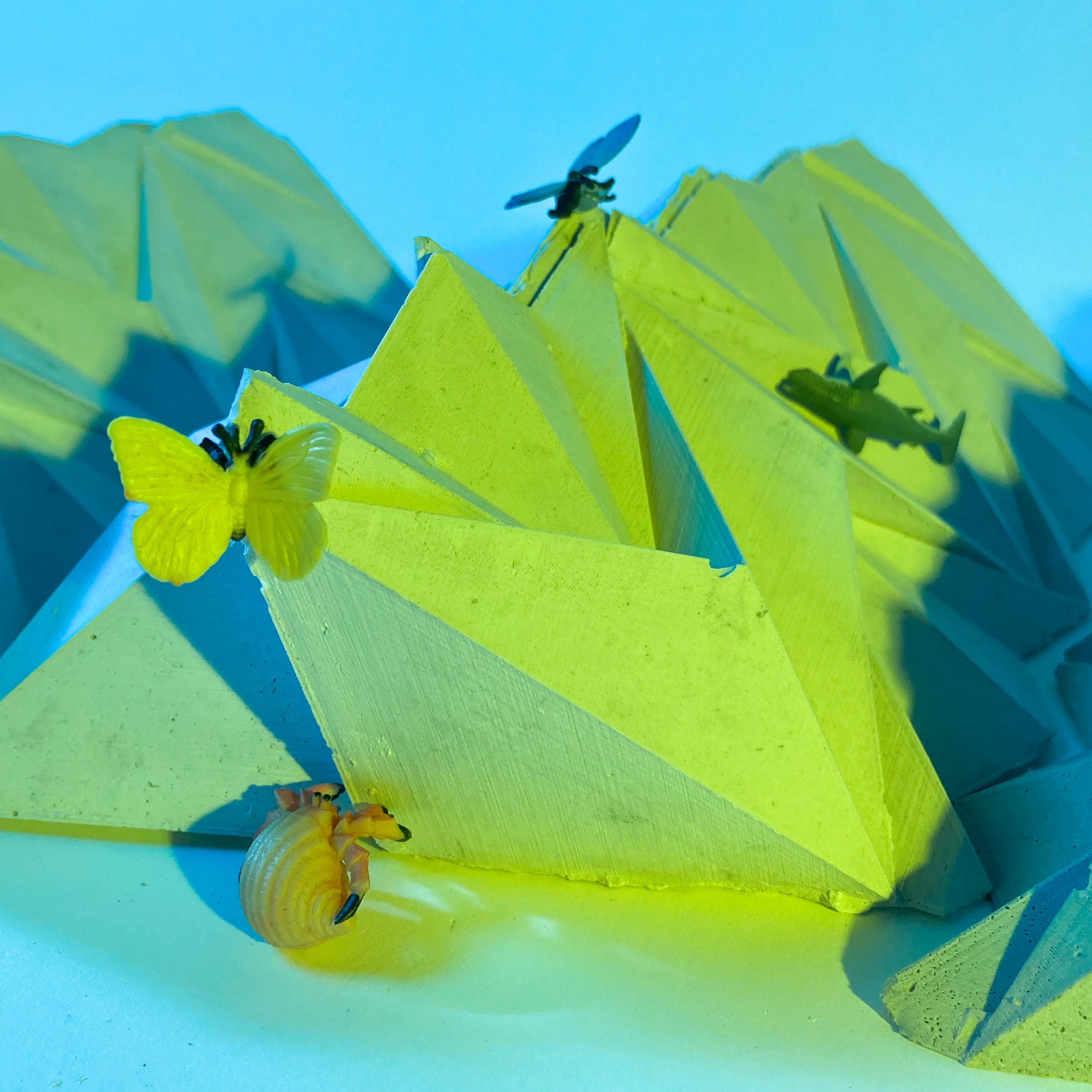ORIGAMI BRICK ORIGAMI BRICK
SP/2021
Columbia GSAPP, Transitional Geometries
Professors: Josh Jordan
Fabrication, speculation and error are a vital part of any creative process. In this instance, the design of a three dimensional tile that could be casted con composed in space, challenged those topics. Designing, 3D printing, mold making, casting, mold making again, casting again, polishing, tiling, lighting, and then photographing.
This project looked at recreating in a hard, solid material a shape that can be most likely associated with a bendable one. To design sharp edged geometries that look like origami, or folded paper, but then cast them in rockite seemed like an interesting experiment. In the other hand, having these geometries in solid form, it would allow them to collaborate in ways light paper can’t. Standing on top of each other, leaning on one another, receiving weight from other objects, etc.
Fabrication then became an interesting process that also allowed to re-evaluate the compositions, and think of the mold as a means to create half tiles within the same larger geometry. An iteration process that is never ending ans always in reminiscence of the past batch.
This project looked at recreating in a hard, solid material a shape that can be most likely associated with a bendable one. To design sharp edged geometries that look like origami, or folded paper, but then cast them in rockite seemed like an interesting experiment. In the other hand, having these geometries in solid form, it would allow them to collaborate in ways light paper can’t. Standing on top of each other, leaning on one another, receiving weight from other objects, etc.
Fabrication then became an interesting process that also allowed to re-evaluate the compositions, and think of the mold as a means to create half tiles within the same larger geometry. An iteration process that is never ending ans always in reminiscence of the past batch.
